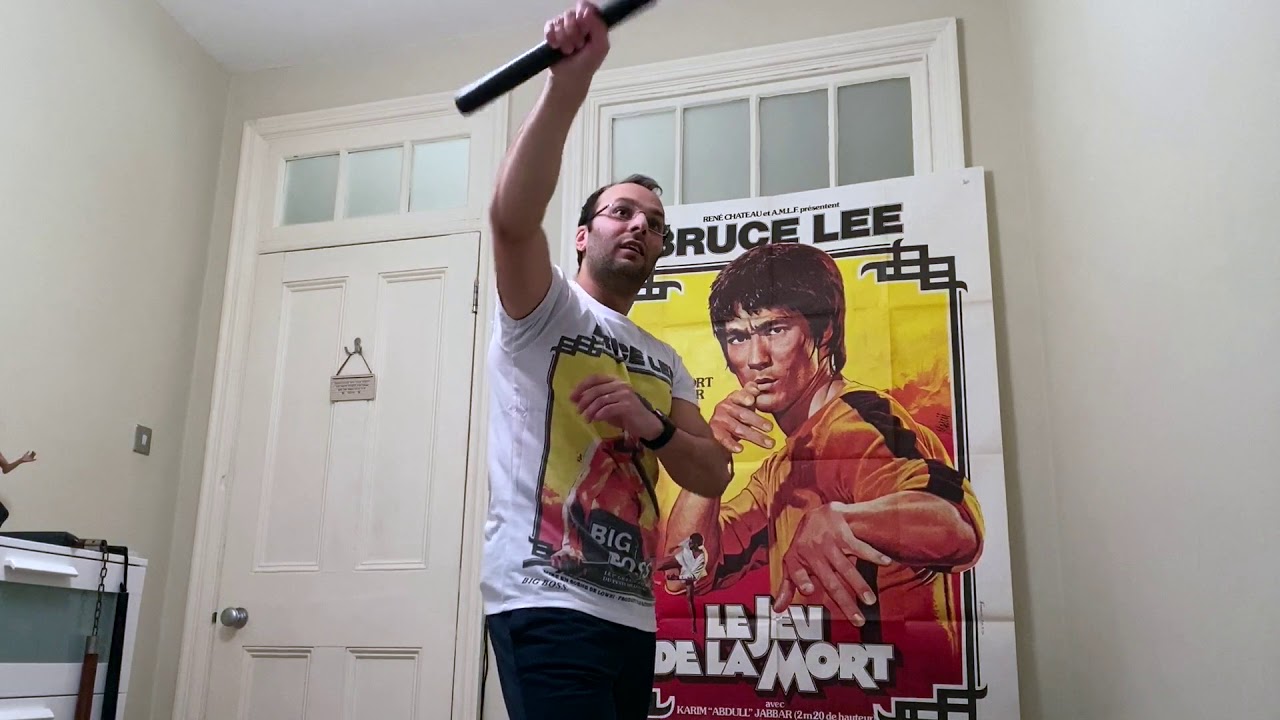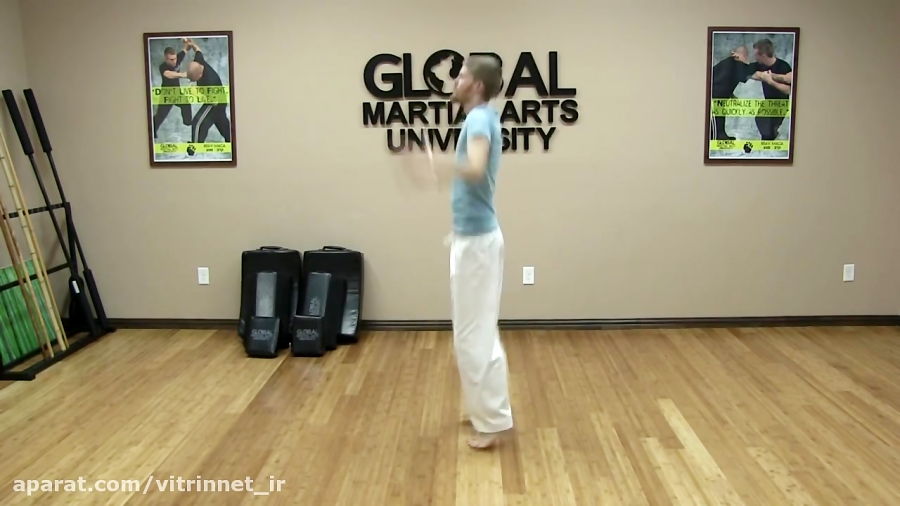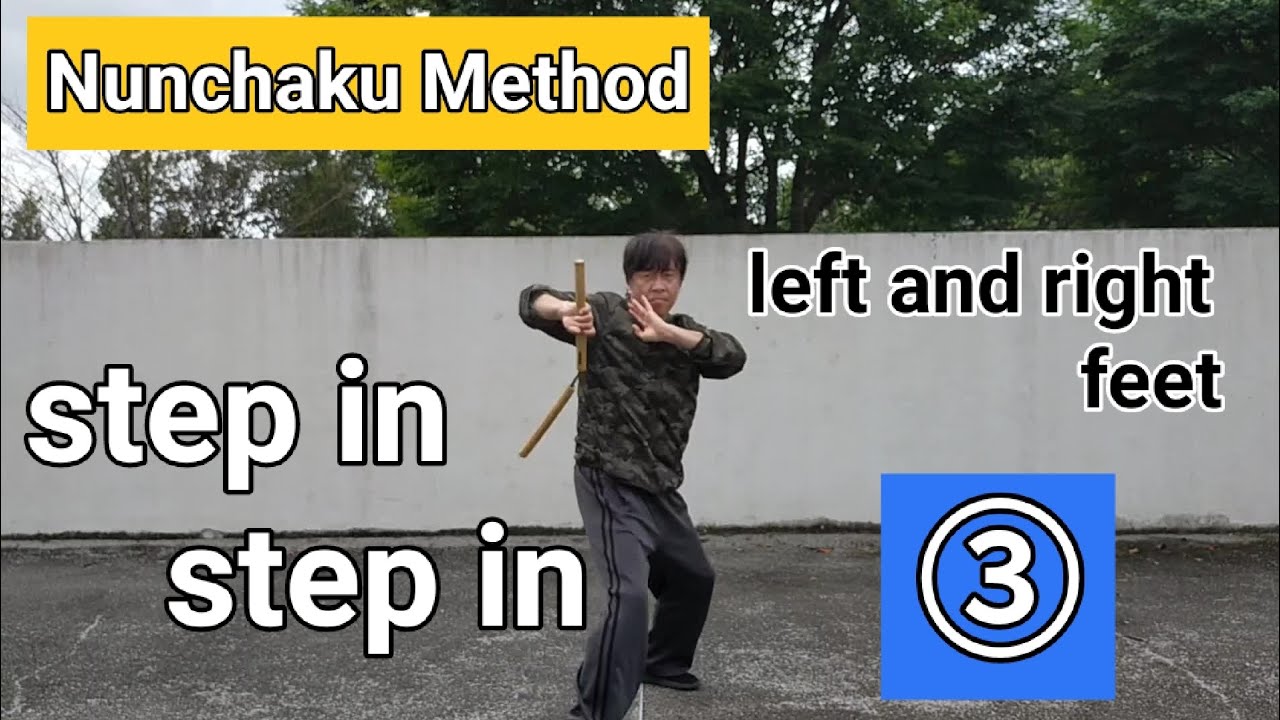Welcome to the world of nunchaku! Whether you're a martial arts enthusiast or just curious about this unique weapon, this guide is tailored for you. Nunchaku, often seen in movies and martial arts competitions, is more than just a prop; it's a versatile tool for self-defense and physical fitness. In this beginner's guide, we will explore the fundamentals of nunchaku techniques, helping you develop confidence and skills as you engage with this ancient weapon. Let's dive in!
Understanding the Nunchaku Components

Before you start twirling your nunchaku, it's important to understand its components. At first glance, it might seem straightforward, but knowing the parts will enhance your performance and safety. So, let’s break it down!
The nunchaku is typically comprised of three main components:
- Sticks: The two elongated pieces, usually made of wood, metal, or plastic, are the main arms of the nunchaku. Their length can vary, but they generally range between 12 to 14 inches.
- Chain or Rope: Connecting the two sticks, this is where a lot of the action happens. A chain allows for quicker movements and faster spins, while a rope can provide more control and a softer impact.
- Grip: Although not a separate component, the grip of the nunchaku refers to the way you hold it. Some nunchaku have textured or padded areas to enhance grip, making it comfortable to wield.
Now, let’s discuss each component in more detail:
The Sticks
The length and material of the sticks can significantly affect your handling of the nunchaku. Here are some common materials:
- Wood: Traditional and offers a great balance. However, wooden nunchaku can be heavy, especially for beginners.
- Foam: Perfect for beginners, foam nunchaku minimizes the risk of injury while practicing.
- Aluminum: Lightweight and durable, metal nunchaku are often used in competitions but require more skill to handle effectively.
The Chain or Rope
This element plays a vital role in how the nunchaku functions. The choice between a chain and rope can change the dynamics of your techniques:
- Chain: Offers a quick response and allows for rapid spins and tricks. However, it can also cause the sticks to hit each other more easily if you're not careful.
- Rope: Provides a more controlled movement and is often favored by beginners who are still mastering their coordination. It can also absorb some shock, making your practice sessions more comfortable.
Importance of Grip
Your grip on the nunchaku affects your ability to perform techniques efficiently. A solid grip will help you maintain control and execute smoother movements. Here are tips to improve your grip:
- Practice holding the nunchaku correctly, with fingers wrapping around the stick's surface.
- Keep your hands relaxed to avoid fatigue.
- Experiment with different holds—light grip for smooth movements and firmer grip for powerful strikes.
Understanding these components will lay the groundwork for your journey in mastering nunchaku techniques. With the right materials and knowledge, you’ll be on your way to becoming a confident nunchaku practitioner. So grab your gear, and let’s practice together!
Also Read This: How to Use the Dubsmash App: Create Fun Videos and Share with Friends
3. The History and Cultural Significance of Nunchaku

Understanding the history of nunchaku can deepen your appreciation for this fascinating martial arts weapon. The nunchaku, often associated with Okinawan martial arts, has roots that trace back centuries. Though its exact origin is somewhat murky, it’s widely believed to have evolved from tools used for farming, specifically for threshing rice.
As the story goes, Okinawan peasants used these agricultural implements for self-defense against marauding samurai and invading forces. Over time, what was once a tool became a weapon, and practitioners began to hone its use for martial training. Nunchaku gained popularity in the 20th century, especially after martial arts films starring legendary figures like Bruce Lee showcased their incredible speed and agility.
Cultural Significance
Nunchaku aren't just martial arts tools; they hold significant cultural weight in Okinawa and beyond. In traditional Okinawan culture, martial arts served as a means of self-defense in a time of oppression and ban on weaponry. Hence, nunchaku came to symbolize resilience and the spirit of self-defense.
Today, practicing with nunchaku isn't merely about learning techniques; it’s a way of connecting with a rich historical lineage. Additionally, many martial artists believe that using nunchaku encourages discipline, respect, and commitment. As you train, you engage in a form of cultural preservation and honor those who came before you.
Some might also argue that the art of nunchaku transcends its physical aspect. The practice is imbued with principles of balance, rhythm, and focus, harmonizing physical movement with mental clarity. This philosophical aspect makes it spiritually enriching as well as physically challenging.
So when you swing those nunchaku, remember: you’re not just wielding a weapon. You're participating in a tradition that has evolved over hundreds of years, a dialogue between past and present that connects you to the warriors of old.
Also Read This: How to Make Six-Pack Abs at Home Fast: Effective Workout Video on Dailymotion
4. Essential Safety Tips for Beginners

Starting your nunchaku journey can be thrilling but remember: safety comes first! Whether you're practicing in a dojo, at home, or outside, keeping yourself and those around you safe is paramount. Here are some crucial safety tips to ensure a positive training experience:
- Choose the Right Environment: Make sure you have enough space to practice. Clear away furniture and obstacles. A spacious area minimizes the chances of accidental injuries.
- Use Proper Gear: Invest in a good pair of training nunchaku. Beginners should start with foam or rubber versions. These are lighter and less likely to cause injury if you happen to miss a swing.
- Warm-Up: Just like any form of exercise, start with a warm-up to loosen your muscles. This can prevent strain and injuries!
- Practice Basic Moves First: Start with fundamental techniques like the basic spin, figure-eight, and overhead strikes. Focus on control and precision before moving on to advanced moves.
- Be Aware of Your Surroundings: Always keep an eye on the people and objects around you. This awareness can prevent unintended accidents.
- Use a Mirror: If possible, practice in front of a mirror. This allows you to monitor your form and movements closely.
- Train with a Partner: Practicing with a buddy can provide extra safety. They can help catch mistakes or errors in your technique.
- Stay Patient: Progress takes time! Don’t push yourself too hard, and remember, everyone was a beginner once. Take your time to master each movement.
By adhering to these essential safety tips, you’ll set yourself up for a rewarding and injury-free journey into the world of nunchaku. Remember, the goal is to build your skills while enjoying the process. Happy training!
Also Read This: How to Upload a Thumbnail to Your Dailymotion Video for Better Engagement
5. Basic Nunchaku Holds and Grips
Understanding the various holds and grips for your nunchaku is essential for mastering the art of using this dynamic weapon. Each grip gives you different levels of control and maneuverability, making it a crucial aspect of your training. Let’s dive into some of the basic holds!
1. The Standard Grip
This is the most common grip and where most beginners start. To achieve the standard grip:
- Hold one stick in your dominant hand, with your fingers wrapped around it.
- Position the other stick against your forearm to rest, using the wrist to maintain balance.
This grip allows for fluid movement and versatility. It's also the foundation for many nunchaku techniques.
2. The Two-Handed Grip
For more advanced moves, you will often switch to a two-handed grip. Here’s how to do it:
- Hold one stick in your dominant hand and position the other stick using your non-dominant hand.
- This grip is especially helpful for spinning and intricate movements that require extra control.
This grip gives you enhanced stability for performing techniques and can even widen your range of motion!
3. The Wrist Grip
As the name implies, this grip involves resting the nunchaku on your wrist. It’s used for specific techniques, like strikes and aerial movements:
- Position the chain of the nunchaku against the wrist while holding the stick in place with your fingers.
- This grip enables you to transition smoothly into spins or throws.
4. The Finger Grip
This grip is less common but essential for some advanced techniques:
- Instead of gripping the stick tightly, let it roll lightly over your fingers.
- This grip offers increased dexterity and is great for practicing rolls and flips.
With practice, this grip can add style to your moves!
By getting comfortable with these basic holds and grips, you will greatly enhance your control over the nunchaku. Remember, practice makes perfect! Experiment with these grips to determine which feels most natural for your style. Who knows, you might discover your own unique hold that works best for you!
Also Read This: Does Dailymotion Show Explicit Content or Nudity
6. Basic Techniques Every Beginner Should Learn
Once you’ve mastered your grips, it’s time to dive into some fundamental techniques that will form the backbone of your nunchaku practice. Although nunchaku may seem daunting, starting with the basics will build your confidence and skill. Let’s check out some essential techniques!
1. Basic Wrist Rolls
The wrist roll is a foundational technique. It’s not just about style; it helps you become familiar with the motion of the nunchaku:
- Start with one stick resting on your wrist.
- With a flick of the wrist, roll the nunchaku over while applying gentle pressure.
Mastering this will help with fluid transitions into other techniques!
2. Figure-Eight Movement
The figure-eight pattern helps with coordination and control. Here’s how to execute it:
- Begin with the nunchaku in the standard grip.
- Move your arms in a figure-eight motion, letting the nunchaku flow smoothly with your movements.
Practicing this motion will familiarize you with directional movements and enhance your spatial awareness.
3. Basic Strikes
Striking is fundamental for self-defense and tournament demos. There are several basic strikes you should learn:
- The vertical strike: Raise one stick over your head and swing down.
- The horizontal strike: Swing across your body with controlled momentum.
- Diagonal strikes: Come across from the upper corner to the opposite lower corner.
Focus on precision and control rather than power. You’ll be amazed at how strong each strike can feel when executed correctly!
4. The Basic Spin
The spin will be not only for show but also for transitioning between techniques:
- Hold the nunchaku in one hand and spin it around your wrist or fingers.
- Keep your movements relaxed and fluid; the nunchaku should feel like an extension of your body.
Once you’re comfortable, you can use this in combination with other moves for more dynamic performances.
Remember, every expert was once a beginner. Take your time practicing these techniques, and don’t hesitate to revisit them as you become more advanced. Consistency is key! Happy training, and enjoy your journey into the world of nunchaku!
Also Read This: Does Dailymotion Pay Creators for Their Uploaded Videos?
7. Practice Drills for Building Muscle Memory
When it comes to mastering nunchaku techniques, building muscle memory is essential. Muscle memory refers to the brain's ability to remember movements through repetition, making your techniques feel more fluid and natural. Here are some effective practice drills that can help you develop that crucial muscle memory:
- Basic Figure Eight Drill: Start with the nunchaku in one hand. Move it in a figure-eight pattern, allowing your wrists to guide the motion. This drill helps with coordination and wrist flexibility.
- Horizontal and Vertical Strikes: Practice horizontal and vertical strikes by swinging the nunchaku in different directions. Focus on maintaining control and precision with each movement.
- Under Arm Pass: Swing the nunchaku around your arm and catch it in the opposite hand. This exercise is fantastic for improving hand coordination and transitioning between grips.
- Rebound Work: Hitting a target, like a heavy bag or a paddle, can help establish timing and accuracy. Use light strikes at first and gradually increase the intensity as you become more comfortable.
- Shadow Nunchaku: Practice your techniques without the nunchaku, mimicking the movements in the air. Visualizing the steps you plan to take builds mental pathways that can enhance your actual performance.
Remember, consistency is key! Set aside time each day to work on these drills, and don't rush through them. A few minutes of focused practice can be more beneficial than hours of half-hearted swings. As you build your muscle memory, you'll notice that your strikes become more powerful, your movements more fluid, and your confidence on the mat will soar.
Also Read This: Don’t Ignore the Small Stuff on Dailymotion Watch and Learn
8. Common Mistakes to Avoid When Learning Nunchaku
Every martial artist stumbles occasionally, and that's perfectly normal! However, being aware of common mistakes can help you progress more efficiently as you learn nunchaku techniques. Let’s discuss some pitfalls to avoid:
- Neglecting Grip: Many beginners underestimate the importance of grip. A correct grip provides better control over the nunchaku. Ensure your grip is firm yet relaxed; don’t squeeze too hard, or you might lose finesse during your movements.
- Not Focusing on Footwork: While practicing nunchaku, it's easy to get so caught up in the weapon that you neglect your footwork. Remember that your movements should be fluid and integrated with your stance and steps to maintain balance and power.
- Overcomplicating Techniques: It’s tempting to dive into complex techniques too quickly. Start with the basics, and make sure you’re comfortable with them before moving on. Mastery of simple moves lays a solid foundation for advanced techniques.
- Learning from the Wrong Sources: In the age of the internet, misinformation is everywhere. Ensure you're learning from reputable instructors or sources. Video tutorials can be beneficial, but stick to those made by experienced practitioners.
- Ignoring Warm-Ups and Cool Downs: Forgetting to warm up and cool down can lead to injury, especially with a dynamic weapon like the nunchaku. Spend at least 10 minutes before and after your practice to stretch and prepare your body.
By being aware of these common mistakes and consciously working to avoid them, you'll set yourself up for success in your nunchaku journey. Remember, the path to mastery is a marathon, not a sprint. Take your time, enjoy the process, and soon enough, you’ll be executing those techniques like a pro!
Also Read This: How to Apply Foundation with a Sponge for a Smooth Natural Finish
9. Advanced Techniques to Explore After Mastery
Once you've built a solid foundation with your basic nunchaku techniques, it's time to step into the exciting world of advanced techniques! These techniques not only enhance your skills but also elevate your ability to express creativity within your practice. Here are some advanced techniques you might want to explore:
- Butterfly Spins: This move involves spinning the nunchaku in a way that resembles the wings of a butterfly. It requires a good sense of rhythm and timing, making it a visually stunning technique.
- Figure Eight: The figure eight motion creates an elegant flow that can be practiced at varying heights. This technique is great for fluidity and can be incorporated into your routines for added flair.
- Wrist Rolls: Mastering wrist rolls is key to displaying skill and dexterity. This technique looks impressive and helps with fluid transitions between strikes and blocking maneuvers.
- Block and Counter Techniques: Advanced nunchaku users should learn how to effectively block attacks and counter them with precise movements. This increases your combat effectiveness and helps you practice defensive skills.
- Two-Handed Techniques: These involve using both hands to manipulate the nunchaku simultaneously. They add complexity to your routines and can lead to the development of unique moves that are your own.
- Combination Moves: Experimenting with different techniques and finding seamless transitions between them will create your own unique style. This could include mixing strikes, spins, and blocks into a single sequence.
As you dabble into these advanced techniques, remember to take it slow and focus on mastering each movement. It's all too easy to feel overwhelmed, but practice and patience are your best allies!
Don't forget to share your journey with fellow practitioners. Joining a community or participating in local workshops can provide you with valuable feedback and tips to hone your skills even further. After all, collaboration often leads to inspiration!
10. Conclusion and Next Steps in Your Nunchaku Journey
Congratulations on diving into the dynamic world of nunchaku! Whether you're just beginning or mastering advanced techniques, the path of learning and growth is one of the most rewarding experiences you can undertake. Nunchaku practice not only improves your physical skills; it also cultivates discipline, focus, and a sense of accomplishment.
As you wrap up your current training session, consider setting some goals for the next steps in your nunchaku journey:
- Self-Assessment: Take a moment to evaluate your progress. What techniques do you feel most confident with? Where do you still have room for improvement? Keeping a training journal can help track your growth and provide motivation.
- Connect with Others: Engage with fellow nunchaku enthusiasts online or in person. Online forums, social media groups, and local martial arts clubs are great places to exchange tips and techniques.
- Record Your Progress: Use video recordings to review your technique and analyze your form. This will also allow you to compare your progression over time and see how far you’ve come!
- Expand Your Skills: As you've seen, there are countless techniques to explore. Consider branching out into related martial arts or exploring other weapon forms to broaden your skill set.
- Stay Consistent: Dedicate a certain amount of time each week to practice. Consistency is key to retaining and mastering your techniques.
In conclusion, the journey into mastering nunchaku techniques is a fascinating and ongoing process. Celebrate your victories, stay humble, and always prioritize safety in your training. Remember, every expert was once a beginner, and the only way to master nunchaku is through perseverance and passion. Keep swinging those nunchaku, and enjoy every moment of your journey!
 admin
admin








